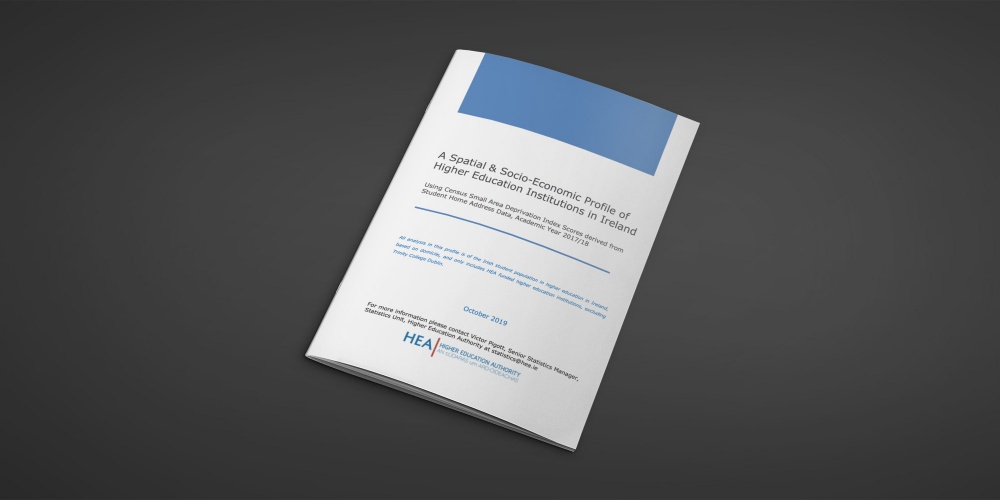Higher Education Spatial & Socio-Economic Profile, 2017/18 Enrolments published
By David Sheils
Posted: 21 October, 2019

Those from Better Off Financial Backgrounds Still More Likely to Go to College
Progress has been made in delivering on the national priority of increasing access to higher education.
The Higher Education Authority (HEA) today, Monday 21st, publishes a detailed picture of the geographical and socio-economic make-up of Ireland’s higher education institutions and courses. All publicly funded institutions except Trinity College Dublin are included in the study. Among the key findings are –
- While approximately 15%-16% of the wider population are defined as “affluent”, 19% of the higher education student body come from this category while over 36% of enrolments in medicine education come from “affluent” backgrounds.
- Though 15% of the second level school student body are defined as “disadvantaged”, it is 10% of the higher education student body that are so classified. Just 3.5% of medicine enrolments come from “disadvantaged” backgrounds.
- Dun Laoghaire IADT has the highest proportion of affluent students (35%) in its student body while UCC, UCD and RCSI (all at 5%) have the lowest proportion from disadvantaged backgrounds Letterkenny Institute of Technology has the highest proportion of disadvantaged students (24%). Note, however, TCD is not part of this study.
- In the case of most institutions, their socio-economic profiles reflects the socio-economic makeup of their location.
- Medicine, Business, Finance and Engineering programmes have higher proportions of affluent students while Agricultural, Environmental, Social Work and Childcare programmes have higher proportions of students from “disadvantaged” backgrounds.
- The socio-economic profile of the student body at the Institute of Technology Blanchardstown (now part of Technological University, Dublin) most closely mirrors that of the national population.
- Students from Mayo and Donegal travel the furthest to attend college. The overall average distance from college of a student’s home base is 69km. Students are most likely to go to colleges geographically closest to them.
- Students at St. Angela’s in Sligo and NUI Galway on average travel furthest from home to attend college while those at the Institute of Technology in Blanchardstown have, on average, the least distance to travel.
According to Caitríona Ryan, Head of Access Policy, at the HEA –
“The work provides a new type of analysis and type of information that we did not have previously, and this will support institutions to develop more targeted approaches to widening access in their regions. It is new data and creates a new baseline; improvements and trends will be tracked over time as we collect this data on an annual basis. We know that our higher education institutions are committed to increasing equity of access to higher education and have made significant progress over time. This was shown in the Progress Review of the National Access Plan where indicators such as progression to higher education from DEIS schools and higher education participation by disadvantaged CSO socio-economic groups all showed progress towards enhanced equity of access.”
The analysis uses the Census Small Area Deprivation Index Scores derived from student home address data for the Academic Year 2017/18.
The detailed information will be published on the HEA website at www.hea.ie/statistics later today (Monday) . The report will provide a breakdown for each Irish higher education institution showing the home location of students, the distance they travelled and the socio-economic profile of the college.
For further information, please contact Malcolm Byrne, Head of Communications 086 22 37 102


